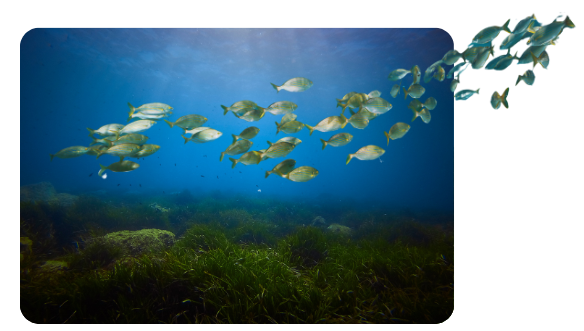Story
How does carbon dioxide affect marine life? And how can biodiversity mitigate climate change?
12 December 2022

Director of Science at Plymouth Marine Laboratory Professor Steve Widdicombe has spoken on Radio FM4’s Klimanews this week, in anticipation of the Fifteenth meeting of the Conference of the Parties to the Convention on Biological Diversity.
In the interview, Professor Widdicombe discusses how carbon dioxide affects the chemistry of our ocean, how this in turn affects marine food webs and wider marine life, and how nature-based solutions like blue carbon are key to mitigating climate change.
Listen to the interview here >>
“The carbon dioxide that we produce through the burning of fossil fuels – and also through changing land use and changing farming practices – it goes up into the atmosphere but the carbon dioxide doesn’t stay in the atmosphere.”
“It reacts with the ocean, it dissolves into the sea water, and what happens then is that it reacts with the chemistry of the sea water to create this acid called carbonic acid.”
The effects of the altered seawater chemistry have huge implications for sea life. It’s not just about the lower pH, the process also changes the level of chemical elements called ions which are very important to those organisms that build calcium carbonate shells.
“Calcium carbonate is a form of chalk, so if we think about animals that use calcium carbonate like molluscs, clams, and scallops and mussels and things like that, also crustaceans like crabs, these animals are using these important ions to make their shells.”

Above: A cluster of mussels, animals that use calcium carbonate to form their shells
“And once they created that, the elements the shells are then made of, becomes susceptible to dissolution for dissolving in seawater where there are high levels of CO2 and low levels of pH.”
“Shell-based animals are an incredibly important part of the food web, and one example are the terropods, these swimming snails that live in large parts of our oceans. They are a very important part of the diet of many large fish, and when they change their food source it might be that choosing a food item which is less nutritious.”
“In order to live in a more acidic environment, it takes more energy for an organism, so if you use more energy just to live in the environment you have less energy available to be reproduce, to grow, so you can imagine the animals becoming smaller if not able to reproduce so effectively. So ultimately that’s going to reduce the success in terms of their population.”
“The big solution is to stop putting carbon dioxide into the atmosphere. This is a phenomena that is predominantly being driven by the amount of carbon dioxide that we are putting into our atmosphere, that is then entering the ocean. But it’s not just the amount, it’s the speed at which we’re putting it in.”
“I think for too many years, the climate COP and the biodiversity COP have operated in effective isolation. However, what we see very strongly is that the ocean binds these two elements together.”
“We know that habitats that have high levels of biodiversity are more resilient to environmental stress, so anything we can do to protect biodiversity will help us be resilient towards changes that are likely to happen due to climate stress. Equally we know that climate change can actually be mitigated to some extent by some of the habitats that we’re trying to protect, to preserve biodiversity.”
“So some of the blue carbon habitats, those habitats that suck down carbon dioxide from the atmosphere are also hugely important for the preservation of biodiversity. Things like seagrass, mangroves, salt marshes, these habitats are not only really important for fixing carbon out the atmosphere and storing it away, they’re also hugely important for maintaining biodiversity in terms of the species that they look after, but also as nursery grounds for species that live elsewhere.”
Listen to the full interview here >>
 Above: Juvenile fish hover in the protective roots of a mangrove in Raja Ampat, Indonesia.
Above: Juvenile fish hover in the protective roots of a mangrove in Raja Ampat, Indonesia.
Professor Widdicombe will be attending the 2022 UN Biodiversity conference, speaking in the event “An Ocean of Life: Knowledge and Solutions for Marine and Coastal Biodiversity under the Post-2020 Global Biodiversity Framework’. This will take place in the Rio Conventions Pavilion (Blue Zone) on the 16th December (08:30 – 13:00 EST). This event will explore the challenges and opportunities to move from knowledge to action in marine and coastal ecosystems in the context of the post-2020 Framework.
You can livestream the event and listen to Professor Widdicombe live here >>

